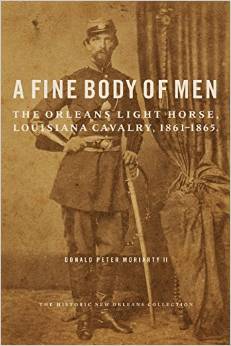The 150th anniversary of the Civil War has recently incited a number of historians—academic and popular alike—to revisit the battlefields, the letters, the Blue and the Gray. Letters from the Storm could not come at a better time, yet this work adds more to our collective knowledge than just another soldier’s account. While heavy on military details, The Intimate Civil War Letters of Lt. J.A.H. Foster will also be of interest to social, gender, family, and local historians, as well as genealogists. The collection offers uncommon insight into sexuality in the period as well. Victorians were well-known for their repressed attitudes towards sex, and yet in these letters, John Foster wrote of his sexual longings quite candidly, if still in somewhat coded language.
Twenty-eight-year-old John Foster left his wife Mary Jane and young son Ira at home in Rural Village, Pennsylvania, in summer 1862 to join Co. K of the Pennsylvania Volunteer Army of the Potomac. He returned home only twice before the war ended in 1865. This collection of letters, nearly all written by John to Mary Jane, is divided into the years Foster spent in the service. This division allows readers to identify the change in Foster’s attitudes towards war over time—from young, battle-seeking upstart to worn, wounded, disillusioned veteran just three years later. The letters provide detailed accounts of a soldier’s life that are typical of Civil War soldiers’ letters: the meager diet, descriptions of battle, dissatisfaction with officers, camaraderie between men. Peppered throughout the book are images from Foster’s letters and life: drawings he included with his letters; photographs of people he encountered in the army; period drawings, maps, and documents; and modern photographs of the Foster home. These images make Foster’s world more real to readers. Although footnotes provide some information about people mentioned in the letters, the index of biographical sketches found at the end of the book is much more helpful.
Letters from the Storm also provides insight into gender relations and family life in the Civil War era. Although the collection includes only three letters from Mary Jane, it is clear that John strove to be an active participant in Ira’s life, even at a great distance. The couple frequently corresponded about Ira’s education, health, hobbies, appetite, and discipline. Both expressed a longing to have more children—a dream that would never be realized. Compared to John’s letters, Mary Jane’s are more regimented and business-like. She kept him abreast of the home finances and frequently asked about settling debts to people in the community. John often complained that Mary Jane’s letters were too short for his satisfaction, perhaps because he also criticized her handwriting, formatting, and spelling in his early letters. “You will have to get a sieve in the shape of a dictionary and riddle all those extra letters out of those words,” he wrote to her in a long letter of December 1862: “I give you this bit of advice for your own good and also to satisfy my pride… Know there is no danger of me laughing at you for I can see by the way you are writing that you are doing your best” (36). Although he was critical, John constantly prodded Mary Jane to write to him more often—“even if it should be nothing else than some old women’s talk” (67).
Being away from his wife often frustrated John, a fact which gives the historian a rare opportunity to see Victorian sexuality at play—literally, for Foster often flirted with his wife in his letters. During their time apart, John wrote to Mary Jane quite explicitly (for the period) yet humorously of his longing for her body. Sharing their sensuality and “stirring each other up,” John believed, “hurts neither of us either physically or morally and anything that can afford us pleasure that is perfectly harmless when confined to ourselves is I think perfectly right” (193). The couple had code names for their genitalia, and Foster frequently imagined their two parts meeting, thoughts which he conveyed to Mary Jane in his letters. And yet the couple expressed the typical Victorian sense of modesty: Foster reminded Mary Jane to lock up the letters after she read them, for “there are some letters for no other eyes except yours and mine, and I would be very sorry indeed to have any one else read them, but there are plenty of just such characters, who would think it fine fun to read any other persons [sic] correspondence” (196)—an ironic statement, now that his letters are in print. Arden and Powell, too, grapple with this issue of privacy, asking, “Do we feel guilty as we read these private letters?” (184). Yet the value of the primary source material will quickly assuage any guilt that readers—or editors—may feel.
Linda Foster Arden’s enthusiasm for her subject, a member of her own family, is undeniable. At times, however, this enthusiasm compromises her ability to maintain academic dispassion. The book includes no true “introduction,” for example; rather, the preface and acknowledgements are more about Arden’s personal interest and experience editing the letters. These more personal notes will interest genealogists and those embarking on their own family history projects, but these sections do little to establish context. Similarly, the family stories in some footnotes, especially those which refer to items passed down in the Foster family, are surely of personal interest to the author but are not significant to the general public. (See notes 180, 184, and 190 in particular) These slight criticisms aside, however, Letters from the Storm provides rich source material that will no doubt contribute to much future research in numerous fields of American history.
Ivy Farr McIntyre is a doctoral student in history at St. Louis University.





